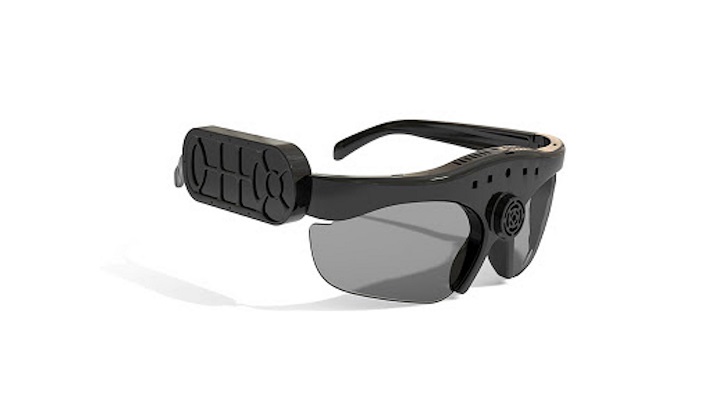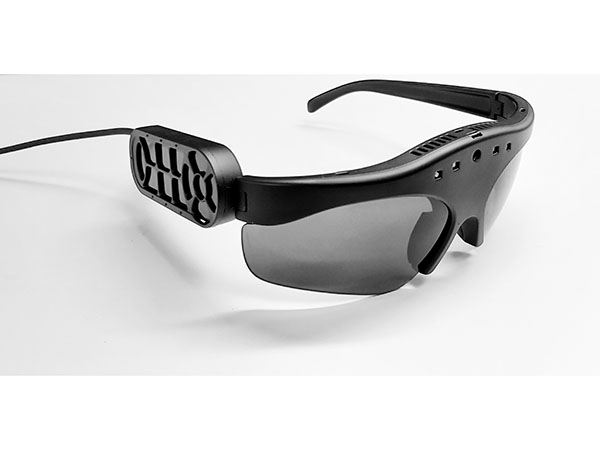Maximizing Efficiency with Screen Readers for the Blind: A Comprehensive Guide
Maximizing Efficiency with Screen Readers for the Blind: A Comprehensive Guide
Blog Article
Empowering Freedom With Assistive Innovation for the Blind
The combination of assistive modern technology for people who are visually damaged or blind represents a considerable advancement in promoting independence and improving top quality of life. With a series of tools-- from screen visitors to cutting-edge tactile tools-- these modern technologies not just facilitate navigating and communication but additionally advertise social inclusion and involvement in different aspects of life. As we discover the varied types of assistive gadgets and their real-world applications, it becomes clear that the effect is profound. Yet, the development of this innovation increases critical concerns regarding access and future growths that call for additional exam. Assistive technology for the blind.
Comprehending Assistive Innovation
Although assistive technology has advanced dramatically for many years, its essential purpose remains the exact same: to improve the high quality of life for individuals with handicaps, especially those who are blind or aesthetically damaged. This technology encompasses a wide variety of tools and tools that help with independence and capability in everyday activities.
Assistive innovation can be categorized right into state-of-the-art and low-tech solutions, each created to meet specific needs. High-tech tools typically include software applications, specialized hardware, and flexible tools that make use of sophisticated modern technology to offer support in numerous contexts. Alternatively, low-tech remedies might include daily products that are modified to enhance accessibility, such as magnifiers or tactile pens.
The integration of assistive modern technology into the lives of people that are blind or aesthetically hindered not just promotes autonomy yet also promotes social addition and involvement in instructional and professional environments. By leveraging these modern technologies, users can navigate their environments, access details, and communicate successfully, thereby enhancing their overall lifestyle. Understanding assistive innovation is crucial for supporters, experts, and caregivers that aim to sustain people in maximizing their possible and achieving higher freedom.
Types of Assistive Tools
Assistive devices for the blind and visually impaired are vital devices that boost daily obeying resolving certain difficulties experienced by individuals. These gadgets can be broadly categorized into three main types: optical gadgets, electronic devices, and sensory devices.

Sensory tools, such as Braille screens and tactile maps, provide different ways to get information. Braille displays transform digital message right into Braille, allowing customers to review with touch. Responsive maps offer spatial understanding with raised lines and textures, permitting for better ecological understanding.
With each other, these assistive devices equip people with visual disabilities to involve more completely with their environments, promoting greater freedom and confidence in everyday tasks.

Effect On Daily Life
The assimilation of assistive innovation into the every day lives of individuals that are aesthetically impaired or blind substantially enhances their ability to interact and navigate with the globe around them. Instruments such as screen viewers, Braille shows, and mobile applications facilitate accessibility to info, permitting users to involve with digital content, connect successfully, and manage everyday jobs separately.
Additionally, modern technologies like smart glasses and navigation applications provide real-time support in strange environments, enhancing mobility and confidence. These tools enable individuals to recognize challenges, reviewed signs, and even acknowledge faces, hence fostering a sense of freedom in public areas. Additionally, home automation systems, which can be managed via voice commands, allow individuals to handle their living atmospheres extra efficiently, improving convenience and safety and security.
The influence of assistive innovation prolongs past sensible jobs; it advertises social inclusion and emotional wellness. By linking the void in between people and their environments, these technologies empower individuals to take part fully in neighborhood tasks, seek instructional opportunities, and engage in significant connections. Ultimately, the advancement of assistive technology is critical in redefining the opportunities for individuals who are blind or visually damaged, resulting in an extra comprehensive and obtainable culture.
Success Stories and Testimonies

An additional effective testimonial comes from Mark, a recent college graduate that used display analysis software application throughout his scholastic trip. This modern technology enabled him to gain access to training course products and get involved in conversations, eventually leading to his effective transition into the workforce. Mark credit scores assistive innovation for equipping him to accomplish his occupation objectives, highlighting its function in leveling the playing field for individuals with visual impairments.
In addition, recreation center have actually reported raised engagement in their programs many thanks to the intro of obtainable electronic systems. These platforms have made it easier for people to link, share resources, and support each other. These success tales jointly underscore the profound impact of assistive innovation in fostering independence, enhancing lifestyle, and damaging down barriers for the blind and visually damaged area.
Future Patterns in Assistive Technology
Emerging modern technologies are positioned to revolutionize the landscape of assistive technology for individuals who are blind or aesthetically damaged. Advancements in expert system (AI) what does an optometrist do and artificial intelligence are enhancing the capacities of gadgets, enabling even more user-friendly customer experiences. AI-driven applications are significantly able to review and identify items text out loud in real-time, offering users with beneficial information concerning their surroundings.
In addition, improvements in wearable modern technology are creating brand-new possibilities for self-reliance. Smart glasses equipped with enhanced truth features can overlay vital details onto the user's visual field, helping with navigating and communication with the environment. The integration of Internet of Things (IoT) gadgets is enhancing ease of access in clever homes, allowing users to manage home appliances and get notices with voice commands or responsive user interfaces.
The advancement of braille display screens and responsive responses systems is also on the increase, promoting access to digital material and improving communication. As these innovations remain to develop, they guarantee to improve day-to-day living, educational her latest blog opportunities, and employment prospects for people with aesthetic problems. Constant collaboration between technologists, users, and campaigning for teams will certainly be essential in ensuring these innovations fulfill the demands of the area properly.
Verdict
Finally, assistive innovation plays a critical role in enhancing the freedom of individuals who are blind or visually damaged. By supplying vital devices and sources, these modern technologies assist in boosted navigating, communication, and accessibility to info, thus fostering autonomy and positive self-image. The transformative effect of assistive devices not just promotes effective interaction with the environment but also motivates social inclusion and engagement in numerous elements of life, inevitably equipping customers to flourish within their communities.
The assimilation of assistive innovation for people who are visually impaired or blind stands for a significant improvement in fostering self-reliance and improving quality of life.The integration of assistive innovation right into the lives of individuals that are blind or visually hindered not just advertises autonomy however additionally fosters social incorporation and involvement in instructional and professional environments. Inevitably, the advancement of assistive innovation is crucial in redefining the possibilities for individuals who are visually impaired or my latest blog post blind, leading to a much more comprehensive and obtainable society.
Many individuals who are visually impaired or blind have shared inspiring success stories that highlight the transformative influence of assistive technology on their lives.In final thought, assistive innovation plays a crucial duty in enhancing the freedom of people that are visually impaired or blind.
Report this page